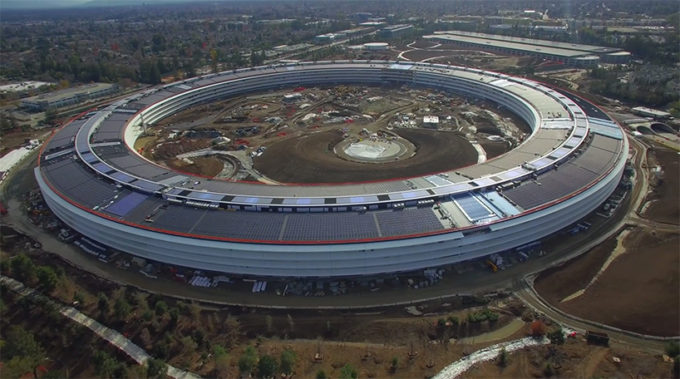This is something I think about a lot. As someone who is very analytical about everything, especially thoughts, I find myself thinking the question: what is the point of running a business? At a small level, when the business makes the average (or simply high) personal income, the objective seems pretty obvious. Running your own business brings creative freedom, and freedom from people telling you what to do (something I struggle with). Its also possible to achieve a higher level of income from running your own business than it is (easily) from being an employee. Multiple indie devs have earned > $1million a year, but unless you look at hedge fund managers or top, top, top lawyers, you would be hard pressed to find anyone earning that as a salary who is not also the CEO. To a certain level then, the ‘objective’ of running and growing a business seems pretty simple and obvious: Money.
I think there are two misconceptions around the issue of making money from running a business once you get above the $100,000 a year level, which many psychological studies have suggested is the level beyond which extra money does not translate to happiness. I’d like to offer my take on them both. They are:
1) Nobody needs more than $X, so why do these people keep working?
2) The point of growing the business is so you make much more money.
The first one I think is easily addressed, and it comes from the differing experiences of people who run a business doing what they love, and people slaving away at a job they hate. For the former, the job is their life, is what they love, its what they enjoy, its what they do. For the latter, the job is a means to an end, and something they would like to do as little of as possible. If you are an employee, and you hold this view, think of it like this: Imagine something that you really enjoy doing, and would do all the time if you could. lets say its playing tennis. Imagine the opportunity to start a business where you played tennis and were paid for it, and you earned the same as your current job. Awesome right? Now imagine things go well and you get really good at it, its your full time occupation so you get so good at it, it takes over your life. You love playing tennis. Suddenly you are making $100k a year playing tennis. You are living the dream. Then things start expanding exponentially, you get offered amazing world tours to show off your tennis skills. People are always telling you how great is is watching you play tennis. You earn $1,000,000 a year playing tennis. This is amazing. You buy a nice house, car, maybe a boat, if you like that sort of thing. You get used to a decent life. The next year you make $10,000,000 playing tennis.

Why would you stop playing tennis? After all, you love it. Sure, people pay you way beyond what they would have to pay you to do it, but thats fine. Meanwhile, people who hate tennis wonder why you dont just stop being such a workaholic. Surely you have *enough* money right?
Now replace the word ‘tennis’ with ‘management consultancy’ or ‘engineering’ or ‘computer programming’. The same applies.
People often get to the top of their profession (and thus earn huge amounts) because they are obsessed with what they do, and they LOVE what they do. Wondering why they keep doing it when they don’t ‘have to’ is looking at the phenomena the wrong way.
So onto the second misconception. This is aimed at people who own big, serious businesses, probably worth a few hundred million, or a billion+ I’ve already established that these people are not going to stop work, and the business is, with any luck going to continue to grow. What I think goes wrong is that the people running these businesses tend to get obsessed with the profits as some sort of score card. They think growing the profit (or market cap) is ‘the point’. I suggest that this is definitely, definitely not ‘the point’, and if you are a CEO who runs a big company and thinks it is, you need to reassess your life.
I read a great book by Henry ford, who was a *complex* man in many ways, and had some funny ideas, but one of the things he was very keen on was employment. He went to great pains to analyze every possible job in his factory to work out what jobs needed people to stand or walk, what jobs required just one arm, or one leg, what jobs could be done just by touch, and was able to employ a large number of blind & disabled people on his production line as a result. He was a bit obsessed (way too obsessed) with his employees home life, and their health, and stability of their relationships etc. He was actually pretty nuts… but in his mind, this all came from a sense that there was a *responsibility* of the large company to be embedded within society, to be a big part of society, and to improve society. Not as some sort of corporate PR, but as the actual driving goal.
Modern business has forgotten this.
You have to look no further than the idea of special employee-only buses to whisk your staff through the post-apocalyptic nightmare outside your ‘campus’ (sounds better than ‘compound’ right?) to their offices, to see how much modern business (esp tech) forgets this. Modern tech thinks that market share, profit and market cap is EVERYTHING and they dont give a damn about what they do in order to get there. Profits are to be spent on ludicrously expensive corporate headquarters, to keep the 0.01% of society you care about (your employees) insulated from the world around you. This is WRONG, and a really *bad* way to keep score as an entrepreneur.

Tesla loses money, and Apple makes a fortune, but I’d wager more people look up to Elon Musk as a hero than Tim Cook. The reason is that you get the impression Elon is trying to achieve some social goal, with money just *a means to an end*. With apple, the ONLY goal is money.
Right now, if you run a big profitable tech company, the #1 best thing you could do to actually achieve some good in society (and my point is that *this* is the objective of running a company) is to hire some people. Pay them well, give them a decent quality of life. Amazon is an economic behemoth, it doesn’t *need* to treat its warehouse staff so badly. No tech company with more than a billion dollars in free cash should ever, EVER, keep you waiting on the phone for tech support or customer service. Those areas are a GREAT way to increase employment, keep customers happy and achieve some social worth. I’m a hardcore free-market worshipping capitalist. I even read a bit of ayn rand (its a bit heavy going after a while…) I am NOT some jealous leftie moaning about other peoples wealth. I just realized, after a lot of thought, that giving people jobs, hiring people and yes… paying your taxes, makes you feel way way better than just adding another zero to a bank balance you are already having trouble spending.